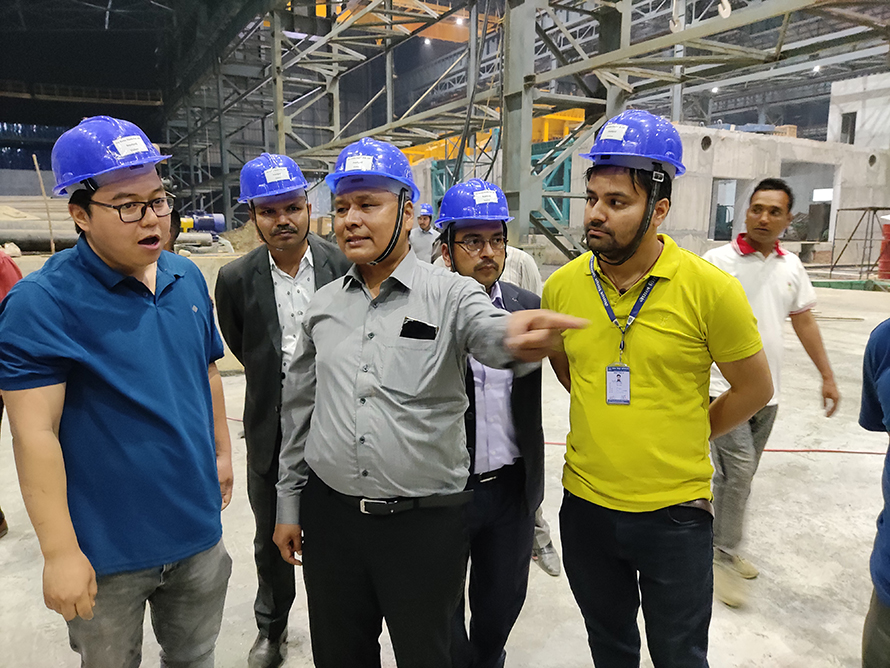By Karuna Thapa
Kathmandu, March 13
Within a month, the Nepal Electricity Authority (NEA) has agreed to offer roughly 35 MW of
electricity to the Ambe Steels Industry in Banke’s Nepalgunj district. The steel sector now receives roughly eight megawatts of power from NEA.
For capacity growth, the industry has requested an extra 27 MW of power. After finishing the building of all essential structures to deliver energy to the company, NEA will send 35 MW of electricity to Ambe Steels, including an additional 27 MW, within a month.
The construction of a 33 kV double circuit transmission line from Kohalpur substation to deliver energy to the industries is nearing completion. In addition, the industry has completed the installation of a substation on its grounds as well as the extension of plant capacity to receive extra electricity.
On Saturday, a delegation led by NEA Executive Director Kulman Ghising visited the site and reviewed the electrical infrastructure that would be built to deliver energy to the company in the Nepalgunj and Kohalpur industrial area, which are expected to open in the coming days.
The team has asked the industry management to finish all of the preliminary work in a month by visiting Ambe Steels, which consumes the most electricity in the Nepalgunj area and obtaining electricity within that time frame.
”To enhance power consumption, we are delivering the appropriate quantity of electricity to the industries. As part of the campaign, new infrastructure is being built to enhance power consumption in industrial corridors, as well as the reinforcement and updating of existing structures ”Ghising, the Executive Director, stated. ”Power supply may be given as soon as the industry completes the essential preparations. There is no issue on our end.”
He stated that the building of the 132 KV substation has been accelerated because more
enterprises would be established in the Ambe Steels-operated region, which is being developed as an industrial corridor. The land purchase process for the substation has begun. With the Asian Development Bank, a concessional loan deal has been inked.
In the next days, electricity will be provided to companies via a 132 kV substation, which will be built around 10 kilometers from the present east-west 132 kV transmission line.
”What would happen if we couldn’t sell the surplus electricity in India to boost demand and use it internally?” asked Executive Director Ghising. ”Thus, the focus should be on growing power consumption in big-size companies.”
Suraj Regmi, the Chief of the Kohalpur Distribution Center, said that work is underway to
double the capacity of the existing distribution system by adding lines and transformers. This will ensure that industrial and domestic customers in the Kohalpur area have access to reliable, high-quality electricity.
In the Bara-Parsa region, Bhairahawa, Sunwal, Parasi, and other locations that are anticipated to become major industrial centers, NEA is building high-capacity transmission and distribution lines.




